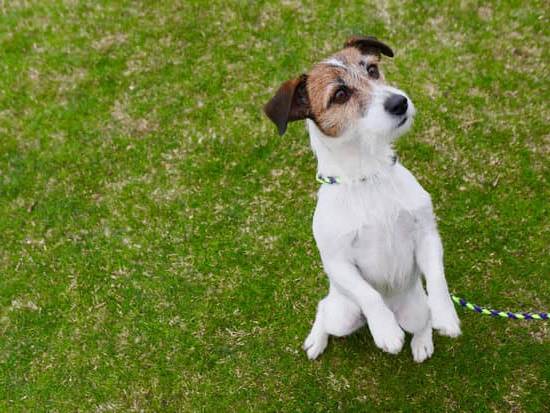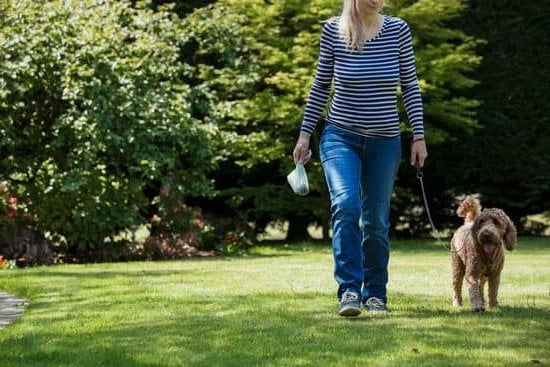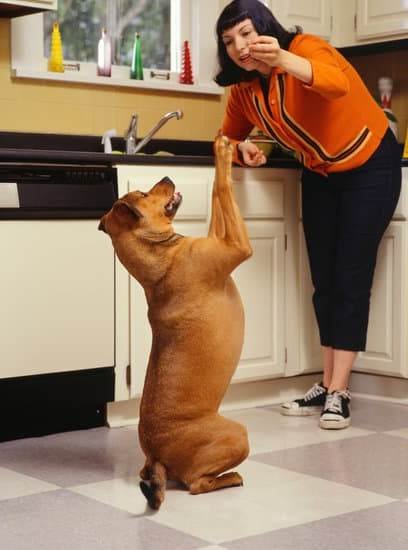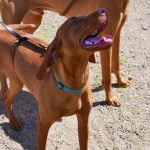Properly training a dog to pee inside and outside is essential for both the dog’s well-being and the owner’s convenience. Teaching a dog to eliminate in specific areas not only promotes cleanliness but also helps establish boundaries and routines. In this introductory section, we will explore why it is crucial to train a dog to pee in designated areas, the benefits of a well-trained dog, and establish the purpose and goals of this blog post.
When dogs are trained to pee in specific areas, it ensures a cleaner and more hygienic environment for both the dog and its owner. Accidents can be messy and unpleasant, so by teaching a dog where it is appropriate to eliminate, potential messes can be minimized. Additionally, proper potty training allows owners to easily clean up after their dogs and maintain a more sanitary living space.
Furthermore, having a well-trained dog that knows when and where to pee adds a great deal of convenience to an owner’s life. No longer do they have to constantly monitor their furry friend or worry about accidents at inconvenient times or places. By establishing consistent routines for elimination, owners can more effectively plan outings or leave their dogs alone without concern.
The goal of this article is to provide readers with comprehensive information on training their dogs to eliminate inside and outside.
We will explore natural urination instincts in dogs, creating structured indoor potty areas, introducing and reinforcing indoor pre-elimination cues, transitioning from indoors to outdoors seamlessly, establishing timing and scheduling routines for successful potty training sessions, troubleshooting common challenges during the process, gradually allowing dogs freedom in regulating their own behavior, as well as celebrating success and offering long-term maintenance tips.
Through this step-by-step guide provided in subsequent sections, we aim to equip readers with the knowledge needed to successfully train their dogs to pee inside and outside while promoting cleanliness, convenience, and harmony between pet owners and their furry companions.
Understanding a Dog’s Natural Urination Instincts
Dogs have natural instincts when it comes to urination, and understanding these instincts is essential in training them to eliminate in specific areas. By recognizing and working with a dog’s natural instincts, you can facilitate the potty training process and ensure success. In this section, we will delve into how dogs instinctively choose their elimination spots, the concept of scent marking and territory establishment, and the importance of recognizing these instincts.
How dogs instinctively choose their elimination spots
When it comes to choosing where to eliminate, dogs rely on several factors. One key factor is scent marking, which is the use of urine to establish their territory. Dogs have an innate need to mark their territory by urinating in specific locations. They are drawn to areas with previous scents from themselves or other animals as a means of communication. Understanding this behavior can help you select appropriate elimination spots both inside and outside your home.
Exploring the concept of scent marking and territory establishment
Scent marking serves as a way for dogs to communicate with other animals in their surroundings. Through urine markings, they leave behind chemical signals known as pheromones that convey messages about their reproductive status, social rank, and territorial boundaries. By recognizing the importance of scent marking for dogs, you can effectively train them to eliminate in specified areas indoors and outdoors.
The importance of recognizing and working with a dog’s natural instincts
By acknowledging and respecting a dog’s natural instincts around urination, you can create an environment that is conducive to proper potty training. Understanding that dogs naturally gravitate towards certain scents allows you to strategically choose potty areas within your home or designate outdoor spaces specifically for elimination purposes. Working with these instincts encourages quick learning and helps avoid confusion during the training process.
In the next section, we will explore the practical steps you can take to create a structured indoor potty area that aligns with a dog’s natural instincts and facilitates successful training.
Creating a Structured Indoor Potty Area
One essential aspect of training a dog to pee both inside and outside is establishing a structured indoor potty area. This designated space serves as a specific location within the home where dogs can eliminate. By providing an indoor potty area, you are not only promoting cleanliness and hygiene but also giving your dog a consistent place to relieve themselves when going outside may not be immediately possible.
To create an effective indoor potty area, select an appropriate location within your home. It’s important to choose an easily accessible area that is away from high-traffic zones or areas where your dog spends most of their time playing or sleeping. This will help minimize accidents in other parts of the house.
Next, you’ll need to gather the necessary supplies for your indoor potty area. There are various options available, including dog litter boxes/pads, artificial grass patches, or even newspaper or puppy pads placed in a designated corner. Consider your dog’s size, breed, and personal preferences when selecting the best option for them.
Once you have chosen the location and supplies for your indoor potty area, introduce it to your dog by guiding them to it when they show signs of needing to eliminate indoors. Encourage them with positive reinforcement whenever they use the designated spot correctly. Consistency is key during this training process. Remember to clean the indoor potty area regularly to maintain cleanliness and discourage any unwanted odors that may deter your dog from using it.
By creating a structured indoor potty area, you are providing your dog with a safe and convenient alternative for eliminating indoors when going outside is not an immediate option. This helps maintain cleanliness in your home while also reinforcing proper elimination habits for when they transition to outdoor pottying. Remember to stay patient and consistent with the training process while gradually moving towards transitioning from indoors to outdoors for elimination.
Introducing and Reinforcing Indoor Pre-Elimination Cues
In order to successfully train a dog to pee inside, it is important to introduce and reinforce specific cues or commands for indoor elimination. These cues will help the dog understand where they should eliminate and establish a consistent routine.
One technique for teaching these cues is through positive reinforcement. Whenever the dog successfully eliminates in the designated indoor potty area, immediately praise and reward them with treats or verbal praise. This will create a positive association between the cue and the desired behavior. Consistency is key during this process, so make sure to use the same cue word or phrase each time, such as “go potty” or “eliminate”.
To encourage the dog to associate the potty area with these cues, it can be helpful to guide them towards it using a leash or by gently leading them on their way. Gradually reduce the guidance over time until they are able to find their way on their own when given the cue. Additionally, consider placing a specific scent or marker in the indoor potty area that signals to the dog that it is an appropriate spot for elimination.
The training process should be approached with patience and consistency. It may take some time for the dog to fully understand and comply with the pre-elimination cues, especially if they are used to eliminating in other areas of the house. When accidents happen outside of the designated area, avoid scolding or punishing your dog as this can create fear and confusion. Instead, calmly redirect them back to the appropriate spot and continue reinforcing the indoor cues.
By following these techniques for introducing and reinforcing indoor pre-elimination cues, you can effectively train your dog to pee inside in a specific area of your choosing. This will not only provide convenience but also help maintain cleanliness in your home. Remember that each dog learns at their own pace, so be patient and celebrate every small success along the way.
Transitioning from Indoors to Outdoors
Transitioning a dog from peeing indoors to going outside can be a gradual process that requires patience and consistency. By following a step-by-step approach, you can help your dog develop new habits and become comfortable with relieving themselves in the appropriate outdoor areas.
- Start by gradually shifting the focus of your dog’s elimination routine from indoors to outdoors. Begin by moving your dog’s indoor potty area closer to the designated outdoor spot. This will help them start associating the outdoor area with their bathroom needs.
- Introduce the designated outdoor potty area to your dog. Choose an area in your yard or nearby park where you want your pup to eliminate. Take your dog on a leash to this spot after meals, naps, and when they wake up in the morning or from a nap.
- Encourage your dog to explore the outdoor potty area and wait patiently for them to pee or poop. Use verbal cues or commands that you have previously taught indoors to signal them that this is the right place for elimination.
- When your dog successfully eliminates outdoors, praise them enthusiastically and reward them with treats or playtime. Positive reinforcement plays a crucial role in reinforcing desired behavior.
- If accidents happen indoors during this transition period, remain patient and avoid punishment or scolding as it may confuse and discourage your pet. Instead, clean up any messes thoroughly with an enzymatic cleaner specifically designed for removing pet odors.
- As your dog becomes more comfortable using the outdoor potty area consistently, gradually decrease the size of their indoor potty space until it is eventually eliminated altogether.
Remember, consistency is key during this process. Stick to a regular feeding schedule and take your pup outside at consistent intervals throughout the day (e.g., immediately after waking up, after meals). With time and practice, your dog will learn to associate outdoor elimination with the appropriate times and places, making for a well-trained and happy companion.
Timing and Scheduling
Establishing a consistent routine is crucial for successful potty training. Dogs thrive on predictability and structure, so it’s important to establish a schedule that includes regular feedings and designated times for outdoor elimination. By following a consistent timing and scheduling routine, you can help your dog develop good habits and reduce accidents inside the house.
The first step in establishing a routine is to determine the appropriate times for feeding your dog. Most dogs need to eliminate shortly after eating, so it’s best to schedule their meals at regular intervals throughout the day.
Consult with your veterinarian or do some research to determine how many meals per day are appropriate for your dog’s age and breed. Once you have established the number of meals, set specific times for each feeding and try your best to stick to them.
In addition to feeding times, it’s important to schedule regular walks or trips outside for elimination purposes. Consider taking your dog outside first thing in the morning, after every meal, before bedtime, and at other regular intervals throughout the day.
These scheduled outings will help reinforce the idea that elimination should occur outside rather than indoors. If possible, try to take your dog to the same designated outdoor potty area each time so they can become familiar with the scent and location.
Lastly, it’s important to note that puppies have smaller bladders and may not be able to hold their urine as long as adult dogs. As a general rule of thumb, puppies can typically hold their bladder for one hour per month of age (e.g., a 3-month-old puppy can hold their bladder for up to three hours).
When starting potty training with a young puppy, be prepared for more frequent bathroom breaks during the day and consider using a crate or confinement area when unsupervised.
By establishing a consistent timing and scheduling routine, you can set your dog up for success in potty training. Consistency is key during this process, so try your best to maintain a regular schedule and be patient with your dog as they learn. In the next section, we will discuss techniques for encouraging your dog to hold their bladder for longer periods and gradually teach them to signal when they need to go outside.
Troubleshooting Common Challenges and Mistakes During the Training Process
During the process of training a dog to pee inside and outside, it is common to encounter challenges and make mistakes. Understanding how to troubleshoot these issues effectively can help ensure a smoother training experience and better results. This section will address some common obstacles that may arise during the training process and provide strategies for overcoming them.
One common challenge is accidents occurring inside the house even after initial progress has been made. Accidents can happen for various reasons, such as inconsistent reinforcement, misunderstanding cues, or the dog being unable to hold their bladder for long periods.
It is crucial not to punish the dog for accidents but instead focus on reinforcing positive behaviors. When accidents occur, clean the area thoroughly with an enzymatic cleaner to remove any lingering scent that may attract the dog back to that spot.
Another challenge that may arise is regression in training progress. Dogs, especially puppies, may go through phases where they seem to forget what they have learned and revert to eliminating indoors. This regression can be caused by changes in routine, stressful events, or medical issues. In such cases, it is important not to get discouraged and start from scratch with potty training basics. Consistency in reinforcement and revisiting good habits will help the dog regain their previous level of proficiency.
Resistance from the dog can also be a challenge during the training process. Some dogs may initially resist using an indoor or outdoor potty area due to unfamiliarity or discomfort with the environment or surface.
To address this, gradually introduce your dog to the designated areas by using positive reinforcement techniques such as treats and praise when they eliminate in these spots. Patience is key when dealing with resistance, as it may take time for your dog to feel comfortable with new routines or environments.
| Challenge | Troubleshooting Strategy |
|---|---|
| Accidents inside the house | Reinforce positive behaviors, thoroughly clean accident spots, and avoid punishment. |
| Regression in training progress | Revisit potty training basics, maintain consistency in reinforcement, and address any underlying causes such as changes in routine or stress. |
| Resistance from the dog | Gradually introduce the dog to designated areas using positive reinforcement techniques and be patient during the adjustment period. |
By understanding these common challenges and having strategies to address them, dog owners can navigate through the potential obstacles of potty training more effectively. It is important to remember that each dog is unique, and troubleshooting may require adjustments specific to their needs.
Gradual Freedom and Independence
The Benefits of Self-Regulation in Potty Training
One of the ultimate goals in potty training a dog is to teach them self-regulation, where they can independently control their elimination habits without constant monitoring or prompting from their owner. This not only provides convenience and peace of mind for the owner, but also allows the dog to have a sense of autonomy and freedom.
When a dog can self-regulate their bathroom behaviors, it reduces the risk of accidents occurring in the house and helps reinforce their understanding of appropriate elimination areas.
Techniques for Encouraging Self-Regulation
To encourage dogs to self-regulate in their potty training, there are several techniques that can be implemented:
- Indication methods: Train your dog to indicate when they need to go outside by teaching them specific cues such as barking at the door or scratching it. Use positive reinforcement when they successfully use these indicators.
- Supervised access: Gradually allow your dog more freedom by giving them supervised access to other areas of the house after successful potty training milestones have been achieved. Monitor their behavior closely during these times and intervene if necessary to prevent accidents.
- Establish routines: Continue with consistent feeding and walking schedules, which helps regulate bowel movements and bladder control. Dogs thrive on routines, so sticking to a set schedule will help them develop good habits.
- Reinforce desired behavior: Whenever your dog displays appropriate elimination behaviors, provide praise and rewards consistently. Positive reinforcement helps strengthen the connection between good behavior and rewards, encouraging them to continue making appropriate choices independently.
Building Trust and Confidence
As you gradually allow your dog more freedom in potty training, it’s important to build trust and confidence in their abilities to make appropriate choices. This involves allowing them opportunities for success while still providing guidance when needed.
One way to build this trust is by gradually expanding the areas where your dog is allowed to eliminate. Start with supervised access to one room, then gradually increase the allowed areas as they demonstrate consistent success. This gradual approach ensures that your dog learns step-by-step without becoming overwhelmed or confused.
Additionally, continue reinforcing good behavior and providing rewards for using appropriate elimination areas independently. This positive reinforcement helps boost their confidence and further strengthens the bond between you and your furry friend.
Remember, each dog is unique and may progress at different rates. Be patient and understanding throughout the process, celebrating their successes while offering support through any setbacks. With consistency, positive reinforcement, and gradual freedom, you can encourage your dog to self-regulate in their potty training journey.
Conclusion
Training a dog to pee inside and outside is a crucial aspect of responsible pet ownership. Throughout this blog post, we have explored the importance of properly training a dog to eliminate in specific areas, the natural instincts that guide their urination habits, and the step-by-step process for creating a structured indoor potty area and transitioning to outdoor elimination. However, it is important to remember that successful potty training is a journey that requires ongoing reinforcement and maintenance.
As you reflect on your training journey with your dog, take pride in the accomplishments you have achieved thus far. Successfully training a dog to pee inside and outside not only improves cleanliness within your home but also enhances convenience for both you and your furry friend. By establishing designated elimination areas and teaching specific cues or commands for indoor and outdoor elimination, you have laid the foundation for a well-trained dog.
It is important to understand that potty training is not a one-time event, but rather an ongoing process that requires consistency and patience. Celebrate each success along the way, whether it’s your dog consistently using their designated areas or indicating when they need to go outside. However, be prepared for setbacks or accidents during the training process. Addressing these challenges with understanding and perseverance will help maintain progress towards long-term success.
In addition to regularly reinforcing good habits and responding positively to successes, it is also important to provide ongoing maintenance and supervision as needed. Keep an eye out for any signs of regression or resistance from your dog, as these may indicate areas where additional training or adjustments are necessary.
Finally, we encourage you to share your experiences and success stories with others who may be embarking on their own potty training journeys. By exchanging tips, strategies, and even stories of overcoming challenges, we can help each other navigate the intricacies of training our beloved canine companions.
So remember, while successfully training a dog to pee inside and outside is no easy task, with dedication, consistency, and positive reinforcement, you can achieve a well-trained and well-behaved dog. Celebrate your successes, remain committed to ongoing maintenance, and enjoy the countless benefits of owning a dog that understands when and where to eliminate.
Frequently Asked Questions
Can a dog be potty trained inside and outside?
Yes, a dog can be potty trained to use both inside and outside areas. This is commonly known as teaching the dog to use designated spots indoors and then transitioning to going outside for elimination. The key is consistency and clear communication with the dog.
Initially, you would designate a specific spot or area inside the house where your dog can relieve themselves, such as using pee pads or a litter box specifically designed for dogs. Through positive reinforcement and consistent training, the dog can learn to associate that specific location with relieving themselves when they cannot go outside. Eventually, you can gradually transition them to going outside by taking them to an outdoor spot every time they need to eliminate instead of using the designated indoor area.
How do I train my dog to pee inside?
To train a dog to pee inside, it’s essential to establish a designated area or spot where you want them to go. This could be either using indoor pee pads or specialized litter boxes for dogs. Start by placing the pee pad or litter box in an easily accessible area of your house, preferably away from their sleeping and eating areas.
Whenever you notice signs that your dog needs to relieve themselves, such as sniffing around or circling, guide them gently towards the designated area and encourage them to use it through verbal cues like “go potty” or “do your business.” After they successfully eliminate in that spot, praise them with positive reinforcement like treats or verbal praise. Consistency is essential; take your dog to this spot consistently throughout the day until they develop a habit of using it.
How do you train a dog to go outside and pee?
Training a dog to go outside and pee involves establishing a routine and setting clear expectations. Begin by selecting a specific outdoor location where you want your dog to relieve themselves consistently, such as your backyard or a nearby park. Make sure this area is readily accessible whenever they need it without any obstacles hindering their way. Take your dog out regularly on a leash (if necessary), particularly after meals, waking up, or extended periods without bathroom breaks.
When you arrive at the designated spot, use verbal cues like “go potty” to communicate your expectations. Be patient and wait for them to do their business. Once they successfully eliminate, offer enthusiastic praise and rewards to reinforce the positive behavior. By maintaining a consistent routine and rewarding them for going in the desired outdoor location, your dog will gradually learn to associate it with relieving themselves outside.

Welcome to the blog! I am a professional dog trainer and have been working with dogs for many years. In this blog, I will be discussing various topics related to dog training, including tips, tricks, and advice. I hope you find this information helpful and informative. Thanks for reading!





